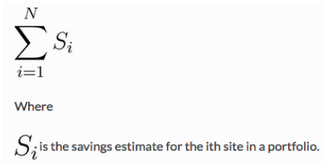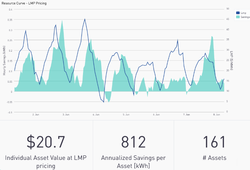|
Week Seventeen CalTRACK Update Establishing guidelines for aggregating building-level hourly energy savings into portfolio loadshapes requires careful consideration of information and uncertainty-level preferences for various use cases. The issues with aggregating energy savings for hourly methods and potential solutions are outlined below:  Aggregation Method for Billing Period and Daily Methods: In daily and billing period methods, building-level savings are generated by summing the building’s estimated energy savings for each day or billing period of the reporting period. The portfolio savings are then calculated by aggregating total savings for each building in the portfolio. Why are daily and billing period aggregation methods problematic with hourly models? For hourly models, portfolio uncertainty is difficult to calculate when savings are aggregated for each hour due to correlation in the error term. Suggested Hourly Aggregation Methods: To begin our discussion of hourly aggregation methods, consider two types of roll-ups: Vertical Roll-Ups: In a vertical roll-up, hours within a day are grouped together for each building before aggregation. For example, one may choose to aggregate hourly energy savings in three-hour intervals throughout the day instead of each hour individually. Although vertical roll-ups can reduce portfolio uncertainty, larger time intervals provide less information in portfolio loadshapes. Hourly methods are created to provide granular information about energy load impacts during each time-of-day. Less information is available if hours are “rolled-up” into larger time intervals. Horizontal Roll-Ups: Horizontal roll-ups aggregate each hourly estimate with estimates of the same hour across weeks. A horizontal roll-up can aggregate individual hours or time intervals, such as the three-hour interval discussed above.  Other Considerations: There were a few additional suggestions from the working meeting (5/24) that could help create guidelines for aggregating portfolio loadshapes:
Homework:
0 Comments
Leave a Reply. |
The purpose of this blog is to provide a high-level overview of CalTrack progress.
For a deeper understanding or to provide input on technical aspects of CalTrack, refer to the GitHub issues page (https://github.com/CalTRACK-2/caltrack/issues). Recordings
2019 CalTRACK Kick Off:
CalTRACK 2.0 July 19, 2018 June 28, 2018 June 7, 2018 May 24, 2018 May 3, 2018 April 12, 2018 March 29, 2018 March 15, 2018 March 1, 2018 February 15, 2018 February 1, 2018 Archives
March 2024
|

 RSS Feed
RSS Feed
